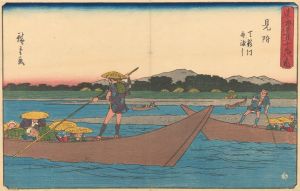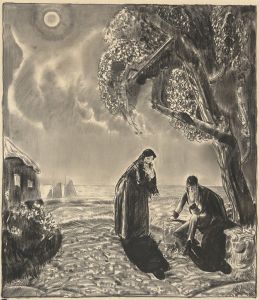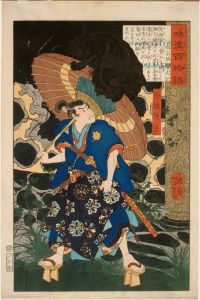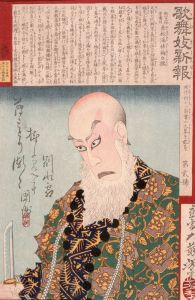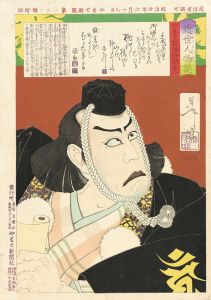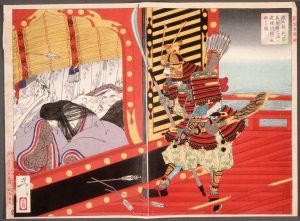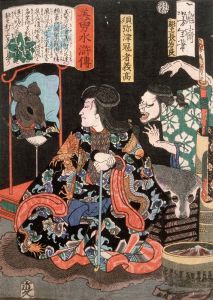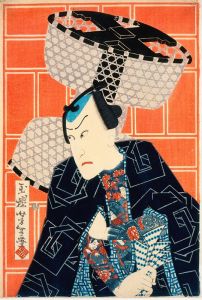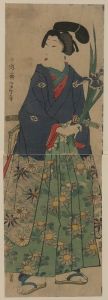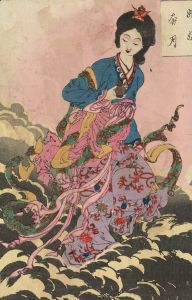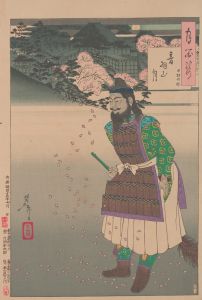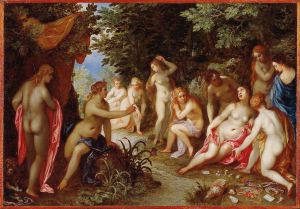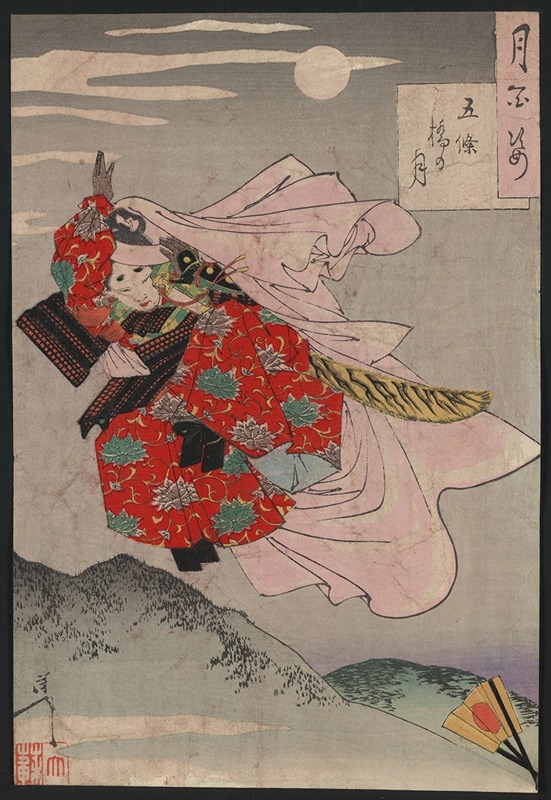
Gojōbashi no tsuki
A hand-painted replica of Tsukioka Yoshitoshi’s masterpiece Gojōbashi no tsuki, meticulously crafted by professional artists to capture the true essence of the original. Each piece is created with museum-quality canvas and rare mineral pigments, carefully painted by experienced artists with delicate brushstrokes and rich, layered colors to perfectly recreate the texture of the original artwork. Unlike machine-printed reproductions, this hand-painted version brings the painting to life, infused with the artist’s emotions and skill in every stroke. Whether for personal collection or home decoration, it instantly elevates the artistic atmosphere of any space.
Tsukioka Yoshitoshi (1839–1892) was a renowned Japanese artist known for his work in the ukiyo-e genre, a style of woodblock printing that flourished in Japan from the 17th through the 19th centuries. Yoshitoshi is often celebrated for his innovative approach to traditional themes and his ability to capture the complexities of human emotion and the supernatural in his art. One of his notable works is "Gojōbashi no tsuki" (Moon over Gojō Bridge), which is part of his famous series "One Hundred Aspects of the Moon" (Tsuki hyakushi).
The "One Hundred Aspects of the Moon" series, created between 1885 and 1892, is considered one of Yoshitoshi's masterpieces. It consists of 100 woodblock prints, each depicting a scene inspired by Japanese and Chinese history, literature, folklore, and mythology, all unified by the presence of the moon. This series is significant not only for its artistic beauty but also for its reflection of the Meiji era's cultural shifts, as Japan was rapidly modernizing and opening up to Western influences.
"Gojōbashi no tsuki" specifically illustrates a legendary encounter between the famous warrior monk Benkei and the young hero Ushiwakamaru, who would later be known as Minamoto no Yoshitsune, one of Japan's most celebrated historical figures. According to legend, Benkei was stationed at Gojō Bridge in Kyoto, where he challenged and defeated every passerby to collect their swords. However, when he encountered Ushiwakamaru, the young warrior's agility and skill allowed him to outmaneuver Benkei, ultimately defeating him. This encounter led to a deep friendship and alliance between the two, with Benkei becoming a loyal retainer to Yoshitsune.
Yoshitoshi's depiction of this scene captures the dramatic tension and dynamic movement of the encounter, set against the serene backdrop of the moonlit night. The use of light and shadow, along with the detailed rendering of the characters' expressions and postures, exemplifies Yoshitoshi's mastery of the ukiyo-e technique and his ability to convey narrative depth.
The "One Hundred Aspects of the Moon" series, including "Gojōbashi no tsuki," is notable for its blend of traditional Japanese aesthetics with innovative compositions and themes. Yoshitoshi's work during this period is often seen as a bridge between the classical ukiyo-e style and the emerging modern art movements in Japan. His prints not only reflect the cultural and historical narratives of Japan but also resonate with universal themes of heroism, loyalty, and the passage of time.
Yoshitoshi's legacy as an artist is marked by his ability to adapt and innovate within the ukiyo-e tradition, leaving a lasting impact on both Japanese art and the broader world of printmaking. His works continue to be celebrated for their artistic and historical significance, offering insight into the cultural landscape of Meiji-era Japan. "Gojōbashi no tsuki" remains a testament to Yoshitoshi's skill in storytelling through visual art, capturing a moment of legendary history with elegance and emotional depth.





